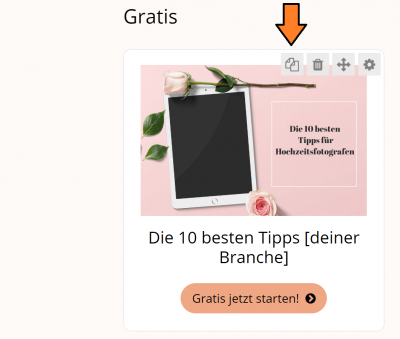Course Variations
You can find the original article in German here.
You've completed your online course, created a sales page, set up your email funnel, maybe even placed ads - and thus done everything possible to pass on your knowledge to your target audience and generate sales.
Sure?
Because there's even more potential in your course than you might suspect. The magic word is "variation."
In this article, we'll use three use cases to show you why multiple variations of your online course make sense and give you inspiration on how to implement them.
Lead Generation
If you want to draw potential customers to your course and give them an early impression of your content, you can publicly release up to three videos. While this works well as a teaser and arouses curiosity, unfortunately you miss out on the chance to get the prospect's email address.
Why is it helpful to collect email addresses?
If a user leaves his data, he becomes a qualified contact - a so-called "lead" - who brings (serious) interest in your product/service. Perfect conditions for him to ultimately become your customer. This must be achieved in the further course (keyword: lead qualification) - and is significantly easier if you have their contact data for marketing purposes.
How do you get your prospect's email address?
Offer a light version of your course, for which the user can register (for free) (a so-called "freebie" or "lead magnet"). It is up to you which content you make accessible in it. If you want to give an overall impression of your online course, you could use the introductory videos of your chapters, for example. If you want to give the interested party a feel for how the individual modules are structured, you could alternatively provide an entire chapter including downloads - or an abbreviated basic version that covers the most important content.
It's up to your discretion how you design the light version. Just remember that the goal should be to convince the user to buy your online course. So don't give away too much. Give a few answers so that he actually gets added value in return for his data, and don't go too deep into content so that curiosity about the "full version" of your course wins out in the end - and you win the next customer.
Improving Your Price Management (Behavioral Pricing)*
Have you ever heard of "behavioral pricing"? I'm sure you've experienced it at least more than once - even if unconsciously.
A quick example:
. You want to get a camera light so that you can finally light your videos properly and the shadows on your face don't make you look older than you actually are. You are neither technically proficient, nor do you have a real sense of how much money you should invest. The choice in an online store is limited to three products. Maybe it shouldn't necessarily be the cheapest option, after all, you want to use your camera light for as long as possible and not rely on inferior quality. But does it really have to be the most expensive version? After all, you're not a professional. The middle option seems to be the most reasonable choice for your purpose.
Trending towards the middle
With three options, do you also usually opt for the middle option? Then you're not alone. "Tend toward the middle" is the psychological pricing strategy that leads to a preference for the middle product when given a low-, mid- or high-priced option. Customers neither want to run the risk of getting too little performance or poor quality for their money, nor do they want to invest too much.
This effect can also be applied to expanding your product portfolio: this is where your price variations come into play. For example, provide a basic version, a premium version (with downloads & bonus material) and a master edition (with regular live calls, exclusive Telegram group, individual support or similar). You can play with the scope of your course offering and set the mid-priced version you'd like to sell the most.
More customized customer solutions
Aside from using variations of your course to improve your price management, you can also use them to offer more customized customer solutions. This allows you to deliver exactly what fits the different needs of your users and, when implemented correctly, ultimately increases customer satisfaction and retention.
What does this mean specifically?
You are a photographer and have recorded an extensive photography course. Here it may make sense to distinguish between beginners and advanced and divide the content accordingly. So your prospect can choose the course that best suits his previous knowledge and pays exactly for the performance that he expects. If the content is right, you have created a positive buying experience and increased the chance that the customer will remain loyal to you in the future and trust in further of your products. It's up to you how far you add to the course variants: an advanced course, for example, would also be conceivable with an upgrade that includes task packages and support via live (group) calls in addition to the course content.
Potential in the B2B sector through coordinated content and branding
Course variations also open up new opportunities for you in the B2B sector. For example, if you offer yoga classes for corporate/business clients, you can duplicate your existing course and add chapters or lessons that are tailored to the client and their health program. Even if the course content remains 1:1, customizing the name, descriptive text, headlines and thumbnails to the customer can create a more professional look and feel.



